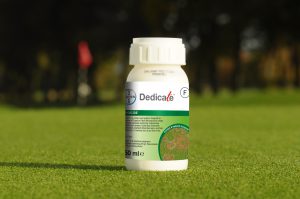Use an IPDM strategy for autumn says turf expert
Related Articles
With the autumn fast approaching, and the risk of disease increasing, greenkeepers are being encouraged to consider a new approach to disease control, and start trialling an integrated, preventative disease management (IPDM) strategy.
Dr Colin Mumford, Bayer technical manager, explains that recent losses of active ingredients from the market, and the possibility of further withdrawals, particularly contact acting curative fungicides, due to regulation changes, means it is important to start developing and testing out new programmes that don’t depend on this type of chemistry.
“I suggest greenkeepers start to test out their new preventative strategies now, while there’s still the safety net of contact chemistry available, to tackle any outbreaks while they perfect their control programmes.”

When taking a preventative approach to disease control, greenkeepers should not overlook the importance of enhancing grass plant health, and integrate their chemical controls with cultural and biological practices.
“Having your turf in prime health condition will give you a head start against Microdochium patch as well as other diseases, such as Anthracnose, limiting the severity of outbreaks later on in the disease season.”
And to maintain or improve turf health, Colin suggests that greenkeepers should make sure that their turf is supplied with adequate nutrition, and if required, nutritional supplements for turf development can be added.
“Stress makes turfgrass more vulnerable to disease, and drought stress in particular often leads to weakening of the plant. So, providing that you don’t over-water your greens, as moist conditions are favourable to disease pathogens, supplemental irrigation can help to overcome this problem,” says Colin.
Fungicide application timings should be carefully thought out, with a number of different factors considered when forecasting for the first application. Course location, prevailing weather conditions and historical disease pressure, will all influence a specific course’s likelihood of succumbing to disease.
Most clubs will need to make their first preventative fungicide application in the early autumn, before disease has a chance to take hold, and as the grass will still be actively growing, greenkeepers should use a product with a systemic action.
“Products such as Exteris® Stressgard™ (fluopyram and trifloxystrobin) and Dedicate® (tebuconazole and trifloxystrobin) have a systemic mode of action, which works to transport the fungicide around the plant, meaning that any areas that don’t come into direct contact with a spray droplet, are protected.
“Both products have a dual action, so, on top of the systemic action from fluopryam or tebuconazole, the trifloxystrobin acts as a local penetrant that acts as a barrier to pathogens entering via the leaf surface,” adds Colin.

























